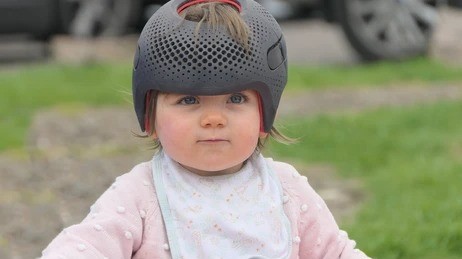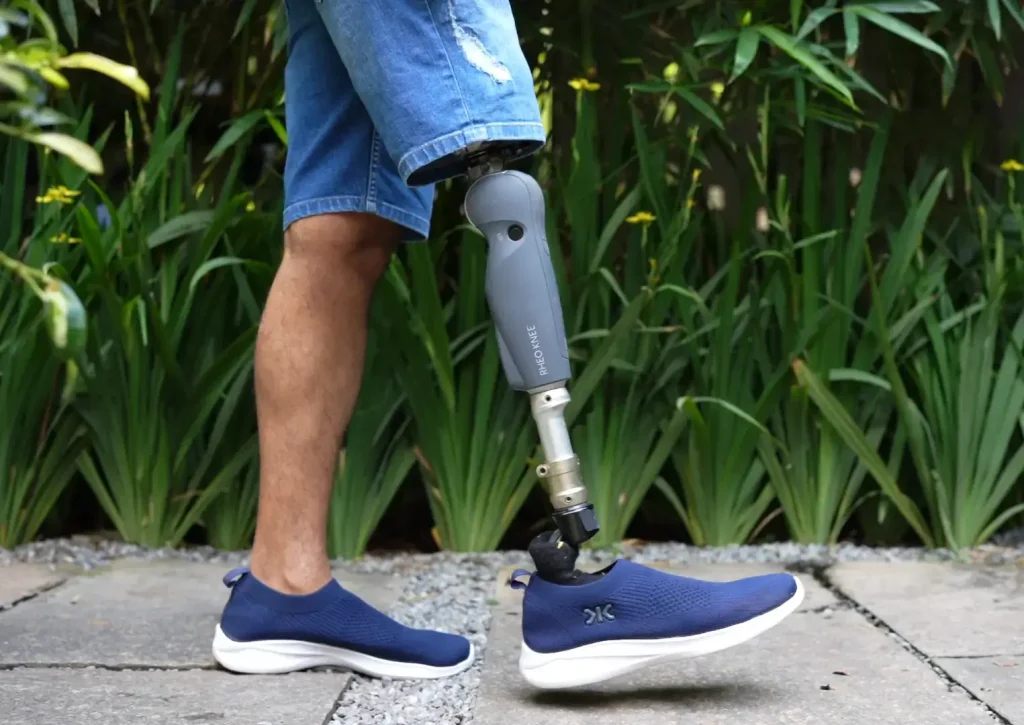Flat head syndromes, such as brachycephaly and scaphocephaly, are more prevalent than you imagine, and this awareness can help ensure you make informed choices.
Voice of new mom: What, is it only me, that my baby looks like a different head?
I can recall the time it came to my notice. My baby was lying on the playmat, and I noticed that the back of their head had a flat appearance. I began to see from the top a few days later, and it appeared to be wider than usual. I dismissed it by assuming that it would sort itself out.

But then came the endless searches:
“What is brachycephaly?”
“Is it normal for a baby’s head to be long and narrow?”
“Do helmets help?”
As this mom, if you’re in this spiral too, then you’re in the right place. Let’s discuss brachycephaly and scaphocephaly, including their definition, causes, and treatments. Because sometimes, that little flat spot means more than we think.
Different Conditions Moms Should Know About Flat Head
There are three main conditions: Plagiocephaly, brachycephaly and scaphocephaly.
What is Plagiocephaly?
Here, plagiocephaly develops when a baby’s head becomes pushed flat by continuous pressure on the same side. For the first several months, babies are placed on their backs to help keep them safe from the risk of co-sleeping.
To know more about plagiocephaly, visit the blog
What Is Brachycephaly?
Brachycephaly is a condition where a baby’s head becomes wider and shorter due to flattening at the back. The head may look tall from the front and wide from the top. It may be visible when you view your baby from above or when comparing photos of babies over time.
It is common for babies to spend a lot of time lying on their back, as it is a safe position during sleep, yet they do not spend much time on their tummy or in various positions throughout the day.
What Causes Brachycephaly in Babies?
Several things can lead to brachycephaly:
- Spending long hours lying flat on the back
- Poor or delayed development, or tightness in the muscles that restrict movement of the head.
- Being born early (because premature infants have weak skulls)
- Multiples (twins or more births)- less space in the womb
It happens more frequently than you might imagine, and during the first few months, the skull of a baby is very soft.
Does Brachycephaly Cause Danger?
Brachycephaly does not interfere with brain development in most instances. However, when it turns out to be moderate or severe, it could cause:
- Jaw misalignment later in life
- Difficulty wearing helmets or glasses comfortably
- Ear alignment differences
Early intervention can make a significant difference in head symmetry and your child’s confidence.
What Are the Symptoms of Brachycephaly?
Parents usually notice:
- Flatness at the back of the head
- A head shape that looks short and wide
- The top of the head appears higher than usual.
- Ears may appear pushed forward.
If you’re unsure, paediatricians and cranial specialists can do a quick assessment.
How to Fix Brachycephaly Head Shape
Mild brachycephaly can improve with:
- Frequent tummy time while the baby is awake
- Changing head positions during sleep
- Babywearing to reduce pressure on the back of the head
Moderate to severe brachycephaly may need helmet therapy.
The Starband Helmet is one of the known solutions with FDA approval. It helps shape the baby’s skull to a more rounded shape. It is completely customised, lightweight, and worn 23 hours a day. Helmet therapy typically lasts 3-6 months, depending on the baby’s age and the degree of flattening. Parents can notice an evident improvement within a few weeks.
What is Scaphocephaly?
Scaphocephaly is another condition associated with flat heads, characterised by a long and narrow head shape. It happens mostly in premature babies or multiple births. Here, the term craniosynostosis is a condition in which the skull bones prematurely fuse. What it does is restrict the skull from developing normally, which may lead to the accumulation of pressure in the head.
What leads to Scaphocephaly?
The rare causes of Scaphocephaly are twofold:
- Positional Scaphocephaly: This occurs due to the baby’s lying position, which is common in premature infants.
- Craniosynostosis: It is caused by early fusion of the sagittal suture over the skull. It needs more medical care.
What Are the Ways of Diagnosing Scaphocephaly?
Doctor’s help is inevitable here. When a paediatrician doubts the craniosynostosis, they ask parents to perform a 3D scan of the child to check the closure of the sutures. If any issues, move to the craniofacial expert.
Is Scaphocephaly dangerous?
The condition of positional scaphocephaly is usually not harmful and often resolves on its own as the child grows. Even more severe is scaphocephaly caused by craniosynostosis. Normally,
- Brain pressure increases
- Impairment of sight and hearing.
- Causes a development delay.
This is why it is essential to undergo a timely medical evaluation.
Is Scaphocephaly self-correcting?
Yes, if it is positional, then it can heal itself over time by some
- Positional changes
- Physiotherapy
- Helmet therapy
If caused by craniosynostosis, the condition will not improve without surgery. Helmet therapy may be used after surgery to guide further skull growth and development.
How to Treat Scaphocephaly in Babies
Treatment options depend on the cause:
- Positional scaphocephaly: Positioning and therapy may help. In moderate cases, helmet therapy can guide correction.
- Craniosynostosis scaphocephaly: It depends on surgery to open fused sutures. During the post-surgery period, the head can be moulded following usage of a helmet.
Visiting a pediatric specialist is always necessary to identify the cause and recommend a suitable treatment course.
What Are the Differences between Brachycephaly and Scaphocephaly?
- Brachycephaly: Flat back of the head, head looks short and wide
- Scaphocephaly: Since each condition has its unique causes and treatment requirements, accurate diagnosis is crucial.
At what age does the head shape of babies set?
The main skull development occurs within the first 3- 6 months. Early intervention was effective for this reason. Helmet therapy can be applied in the earlier stage. Later, the bones start to harden, reducing the possibility of reshaping.
When you have such concerns, it is advisable to address them to your paediatrician as soon as possible.
What Will a Cranial Helmet Do to the Brachycephalic and Scaphocephalic Kids?
- Supports the baby’s natural skull growth by guiding it into a rounder shape
- In brachycephaly, it helps correct the flatness at the back of the head.
- In scaphocephaly, in some cases, it can be used after surgery to maintain proper head shape.
- Fully customised to fit your baby’s head for maximum comfort and effectiveness
- Worn approximately 23 hours a day, so that there is growth in the required areas.
- Non-invasive, painless, safe, their effects become visible in several months.
Why is the Best Consultation Important?
- Each case of the head shape problem in the baby is unique, and the professional evaluation guarantees appropriate plans.
- Problems related to head symmetry or development can be avoided through early diagnosis and treatment.
- Helps identify whether it’s positional or a structural condition like craniosynostosis
What KARE Bangalore Offers
- Consultations with trained cranial specialists
- FDA-approved cranial helmets
- Full customisation based on your child’s head shape and condition. Proper advice at the right time leads to better outcomes and peace of mind for parents.
Every baby’s head grows differently. As a parent, your instincts are powerful. If you’re experiencing flatness, narrowness, or something you’re unsure about, consult a healthcare provider. Most parents are glad they asked early.
Whether it’s brachycephaly, scaphocephaly, or another condition, support is available. Solutions like StarBand helmets offer gentle, effective ways to guide healthy growth.
Your baby’s head shape is part of their journey, and you’re doing everything right by seeking answers now.






